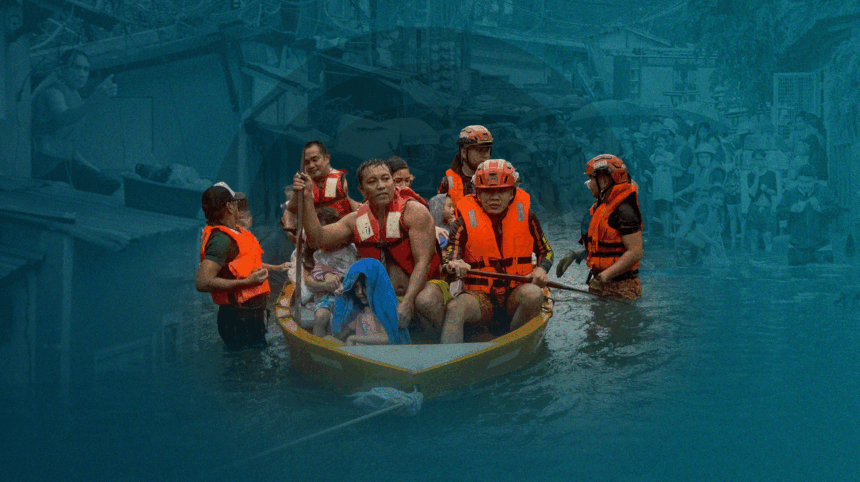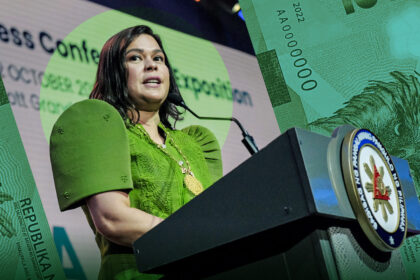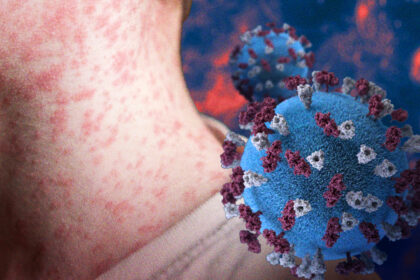The Harvard Humanitarian Initiative (HHI) revealed that there is a significant improvement in the self-reported disaster preparedness level of Filipinos, however, noted that it is still lacking for a country that is prone to multiple disasters.
In 2017, the disaster preparedness among Filipinos is 13.5 out of 50, while the latest finding in 2024 improved to 19.2.
The HHI study was based on 5 objective measures of disaster preparedness, which the Philippines obtained: planning (4.0), training (3.5), material investment (4.5)t, information (4.9), and social support (2.3).
“A score of 19.2 highlights both progress and areas needing urgent attention. While it shows an improvement in disaster preparedness, the score suggests that Filipinos are only doing 38.4 percent of the kinds of disaster preparedness activities needed to be prepared,” says Dr. Vincenzo Bollettino, director of the HHI Resilient Communities program.
The Philippines, situated along the Pacific Ring of Fire and the typhoon belt, is no stranger to natural disasters such as earthquakes and especially, typhoons.
Despite its frequent exposure to these calamities, it begs the question if we are truly ready when facing them and the country’s level of preparedness.
How ‘resilient’ is the Filipino resiliency?
The director of research at HHI, Patrick Vinck, emphasized the importance of investing in ‘local leadership’ and ‘advancing technology’ to improve warning systems and community engagement.
“[Preparedness] should be accompanied by investments in resilient infrastructure, local capacities and anticipatory actions,” he added.
From February to March 2024, the study gathered data from 4,608 Filipinos throughout the entire country, which uncovered that only 87% carry out safety measures to protect important documents (birth certificates, marriage certificates, and property titles) and only 70% responded that they monitor disaster warnings.
Based on the recent data of HHI, Filipino respondents did not feel as though they would receive help and assistance from neighbors, friends, or non-government organizations (NGOs).
The majority believed in being ‘self-reliant,’ where they are self-sustaining when preparing for a disaster (64%), during a disaster (62%), and post-disaster aftermath (63%).
‘Most-disaster prone’ country
With the Philippines having at least 20 typhoons enter the Philippine Area of Responsibility (PAR) annually together with other disasters, it remained ranked as the most disaster-prone country for 3 consecutive years.
According to the 2024 edition of the World Risk Report, the Philippines garnered a 46.91 score for having the highest world risk index (WRI), which increased from the 2023 score of 46.86.
Based on the report, WRI is calculated in terms of exposure and vulnerability from disasters, where exposure represents the extent to which populations are exposed to and vulnerability is composed of their susceptibility, coping, and adaptation.
The report also stressed that WRI can also be affected by multiple crises, jeopardizing livelihoods and future opportunities and creating a significant impact on mental health, which can play a role in intensified burdening of a country’s state.
Mitigating disaster and flooding problems
In his third State of the Nation Address last July 22, President Ferdinand Marcos Jr. proudly claimed that there are 5,500 flood control projects accomplished already that can shield the country from upcoming typhoons.
With these 5,500 existing projects, DPWH Undersecretary Cathy Cabral stated that there are also 5,000 more flood control projects under construction.
However, in less than 4 months, consecutive flooding brought by Tropical Storm Kristine and Super Typhoon Leon made Marcos admit that these mitigation measures were ‘not enough.’
According to Marcos, there are existing flood control projects, but they are just overwhelmed due to the continuous aftermaths brought by the disasters.
“I’ll tell you the truth, it’s never enough [government response], it’s never enough. I wish we could do more, we are doing everything that we can, but you know when you lose a life, you lose a life, what you can do about that,” said Marcos.








